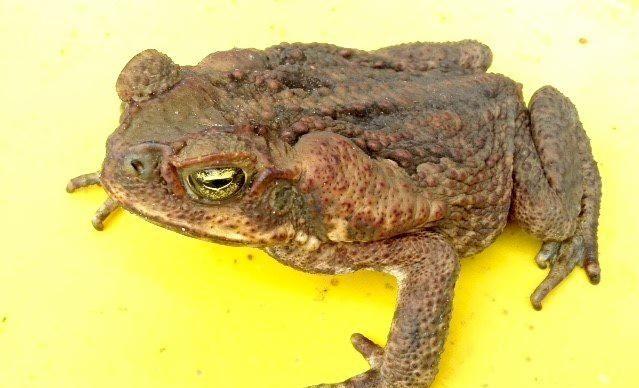The best (and worst) ways to kill a cane toad
ONE resident's request for help to dispose of a cane toad has sparked a significant debate.

Lismore
Don't miss out on the headlines from Lismore. Followed categories will be added to My News.
WHILE there is a fairly universal agreement over the need to control cane toads - an invasive species and major environmental pest - there is significant debate on the most humane methods to use.
One Northern Rivers resident posted on Facebook asking for assistance to "dispose" of a cane toad she had caught in a bucket.
"It's really big and I don't have what it takes to finish him off," Tricia Griffin said.
Her post attracted more than 250 comments.
Residents responded with a number of methods (which are considered inhumane by authoritative sources):
- Freezing them then smashing them
- Spraying with dettol
- Running it over
- Pouring salt on it
- Whacking it i.e a golf club
- Removing head with shovel
- Splash the tears of a trust-fund hipster on its third eye.
But RSPCA suggest effective humane methods.
Detailed information on the humane killing of cane toads is available in the Australian Government publication, Standard Operating Procedure for the Humane Field Euthanasia of Cane Toads (SOP) which has been based on a comparative study of the humaneness of a range of different cane toad killing methods.
There are three methods listed as conditionally acceptable:
1. Spraying with Hopstop; a commercialy available aerosol spray designed for the purpose
2. Stunning followed by decapitation; this method is only suitable for use by confident and skilled operators with the correct equipment and technique
3. Prolonged exposure to carbon dioxide; the most commonly used method for killing multiple cane toads at a time. To be used by trained operators using appropriate equipment. Death must be confirmed prior to disposal.
A further method, cooling followed by freezing, is listed as not acceptable, but recent research suggests this may be the most humane and reliable method for untrained people where Hopstop is unavailable.
This method involves two steps - toads should be placed in a plastic bag and then in a container (labelled) and placed in the refrigerator for at least 12 hours to allow loss of consciousness.
Then once the toad is checked that it is no longer moving, it can be placed in a freezer for 24 hours, and once confirmed dead, it can be disposed of.
The SOP also states that the disinfectant Dettol must not be used to kill cane toads as it is inhumane.
How do you know when a cane toad is dead?
- Loss of righting reflex - the toad cannot turn itself over when placed onto its back
- Loss of withdrawal reflex - no response to a light squeezing of the skin in between the toes
- Loss of deep pain reflex - no response to moderate squeezing of the toes
- No respiratory movement - no throat movements that indicate breathing
- No heart activity - no chest movement or visible pulse
If any of these signs are detected, the RSPCA suggest the killing procedure be repeated.
Always wear thick plastic gloves when handling cane toads.


